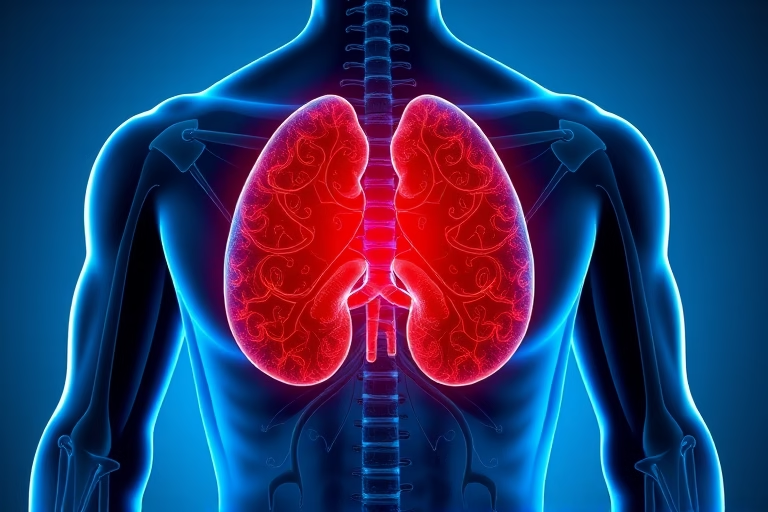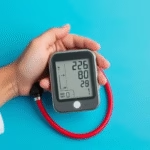In this article, we will explore the question: Can a herniated disc cause high blood pressure? A herniated disc occurs when the inner gel-like substance of a spinal disc protrudes through a tear in the outer layer of the disc, potentially compressing nearby nerves. This condition often results in a combination of pain, numbness, and weakness in the affected area. Interestingly, there is growing evidence to suggest that a herniated disc may not only lead to localized symptoms but also impact the body’s wider systems, potentially influencing blood pressure. High blood pressure, also known as hypertension, is a serious health concern that can lead to greater health problems if left untreated. It is crucial to understand whether herniated discs can contribute to this condition and, if so, how these two health issues may intersect.
Understanding Herniated Discs and Their Symptoms
A herniated disc, often referred to as a slipped or ruptured disc, occurs when the soft inner material of the disc pushes out through a crack in the tougher exterior. This can lead to various symptoms, including localized pain, radiating pain, and neurological issues. When the herniated material presses on spinal nerves, it might also cause muscle weakness or altered reflexes. The most common areas impacted by herniated discs are the lumbar (lower back) and cervical (neck) regions. Symptoms can vary significantly depending on the location of the herniation and the nerves affected.
Understanding these symptoms is crucial, especially since they can mimic or overlap with other health issues, adding to patient confusion. Herniated discs frequently affect individuals who are middle-aged, and the risk of occurrence often increases with age, repetitive strain, or a sedentary lifestyle. The initial symptoms often manifest as dull pain that may escalate to sharp or burning sensations, leading to the question of how they affect wider bodily functions, including blood pressure.
The Link Between Chronic Pain and Blood Pressure
Chronic pain has been shown to create a stress response in the body. When a person suffers from relentless pain, especially due to a herniated disc, their body releases stress hormones such as cortisol and adrenaline. These hormones can cause the heart to pump harder and increase blood pressure. Furthermore, chronic pain may lead individuals to adopt a sedentary lifestyle, which can also contribute to high blood pressure.
Moreover, experiencing severe pain may provoke anxiety and stress, leading to an elevation in blood pressure as the body goes into “fight or flight” mode. Recognizing this connection is vital for individuals who have a herniated disc, as managing pain effectively may play a role in keeping blood pressure levels in check. Various studies suggest that better pain management correlates with lower blood pressure readings.
Potential Mechanisms Linking Herniated Discs and Hypertension
The potential mechanisms whereby a herniated disc may lead to high blood pressure are not entirely understood but are worth exploring. One possibility is the direct physical stress placed on the nervous system. When a herniated disc impinges on spinal nerves, it could signal the body to react defensively, potentially leading to increased heart rate and elevated blood pressure. Additionally, pain signals sent from the injured area may trigger a hyperactive sympathetic nervous system response, further escalting stress levels in the body. Another aspect to consider is the inflammatory response associated with herniated discs, which can lead to systemic effects, including impacts on long-term cardiovascular health.
Management of Herniated Discs
Managing a herniated disc involves a combination of non-surgical and surgical treatments, depending on the severity of the symptoms. Non-surgical methods often include physical therapy, pain medication, and lifestyle modifications. Activities such as yoga or low-impact exercises can help alleviate symptoms. Pain management, including the use of anti-inflammatories and other medications, plays a critical role in minimizing discomfort, which in turn can potentially regulate blood pressure levels.
For those whose symptoms do not alleviate with these interventions, surgical options such as discectomy or spinal fusion may be necessary. Understanding one’s treatment options for a herniated disc is essential, especially if there are contributing factors of hypertension. It’s crucial for individuals to discuss all issues with healthcare providers to determine the best course of action.
Lifestyle Modifications to Prevent High Blood Pressure
Preventing high blood pressure, especially for individuals with a herniated disc, may involve several lifestyle modifications. A heart-healthy diet, low in salt and rich in fruits, vegetables, whole grains, and lean proteins, can contribute significantly to maintaining balanced blood pressure levels. Moreover, regular physical activity is essential, though adjustments may need to be made depending on the pain levels and mobility challenges posed by the herniated disc.
Stress management techniques, such as mindfulness, deep breathing exercises, and meditation, can play an integral role in lowering blood pressure. Maintaining a healthy weight is critical as obesity is a significant risk factor for hypertension. Pursuing these lifestyle changes works synergistically to support both spinal health and cardiovascular well-being, thereby potentially reducing the risk of high blood pressure.
The Importance of Medical Supervision
For individuals experiencing complications from a herniated disc, regular visits to a healthcare provider are essential. These appointments allow for monitoring of both spinal health and blood pressure levels. Engaging with a specialist can guide the management of symptoms while also tracking any developments in general health. This proactive approach is key to addressing any possible relationship between pain and blood pressure effectively.
Complementary Therapies for Pain Relief
In addition to traditional treatments, many find relief through complementary therapies. Methods such as acupuncture, chiropractic care, and massage therapy can provide significant relief for some individuals with herniated discs. These therapies may not only help alleviate pain but can also facilitate relaxation and stress relief, potentially impacting blood pressure positively. Research varies on the effectiveness of these therapies, so individuals should consult their healthcare provider before exploring such options.
Recognizing Symptoms of High Blood Pressure
Many people are unaware they have high blood pressure until it leads to more serious health issues. Recognizing the symptoms is crucial for those already managing a herniated disc. Common signs may include headaches, dizziness, chest pain, and visual disturbances. Individuals should regularly monitor their blood pressure, especially if they have risk factors, including chronic pain conditions like a herniated disc. Regular check-ups help to catch elevated blood pressure early, allowing for timely management.
Consulting Specialists for Integrated Care
For comprehensive care, patients with herniated discs should consider consulting a multidisciplinary team, including physicians, physical therapists, and dietitians. An integrated approach allows for a holistic strategy to managing pain and blood pressure. When different expertise overlaps, it can foster improved outcomes and enhance the quality of life.
Conclusion
A herniated disc may indeed contribute to high blood pressure, primarily through mechanisms linked to chronic pain, stress responses, and lifestyle changes. Effective pain management is essential for individuals with this condition, as it may play a critical role in regulating their blood pressure levels. Lifestyle modifications, regular medical supervision, and exploring complementary therapies can further enhance well-being and mitigate the risks associated with hypertension.
Ultimately, understanding the relationship between a herniated disc and high blood pressure is essential in formulating an appropriate health strategy. Individuals suffering from these conditions are encouraged to be proactive in their health management, reaching out to medical and wellness professionals for comprehensive care tailored to their needs. This integrative approach can help prevent the development of high blood pressure and its associated risks, enabling a healthier future.
Frequently Asked Questions
Q1: Can a herniated disc be cured?
A1: While many cases improve with conservative treatment and lifestyle modifications, some individuals may require surgery. Consult a healthcare provider to assess individual conditions.
Q2: How can I tell if my high blood pressure is caused by a herniated disc?
A2: Symptoms of herniated discs mainly include localized pain, numbness, and tingling. High blood pressure symptoms can be vague. Regular monitoring is a must for proper diagnosis.
Q3: What should I do if I have back pain and high blood pressure?
A3: Consult a healthcare provider for diagnosis and treatment options. Integrating pain management and hypertension management strategies is essential.
Q4: What dietary changes can assist with high blood pressure?
A4: Following a heart-healthy diet low in sodium, processed foods, and rich in fruits, vegetables, and whole grains can help manage high blood pressure.
Q5: Are there exercises I can do with a herniated disc?
A5: Gentle exercises such as walking, stretching, and specific physical therapy routines can help. Always consult with a healthcare provider for personalized recommendations.
Further Reading
What Type of Psychotherapy Is Best for Anxiety?







